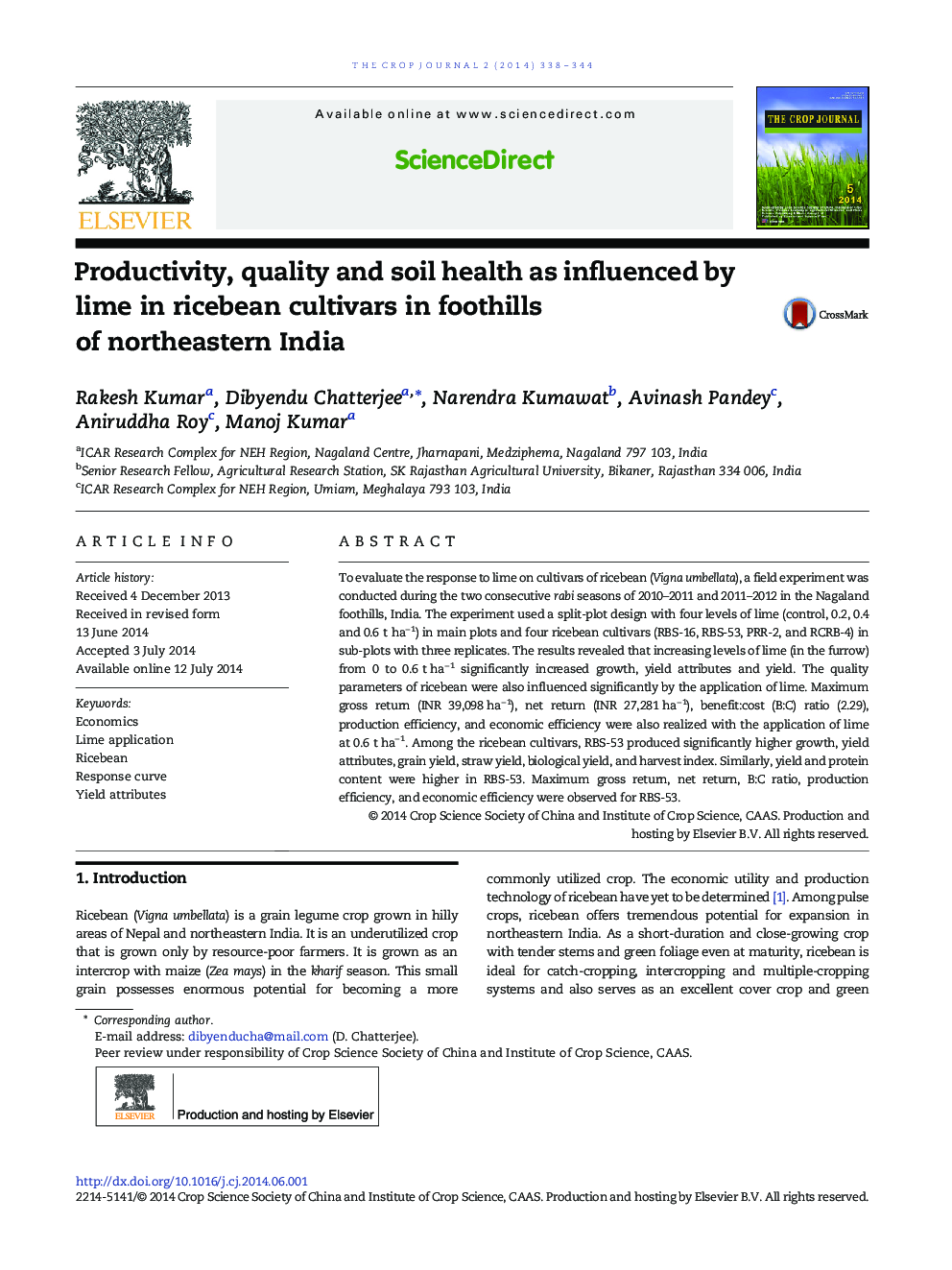| Article ID | Journal | Published Year | Pages | File Type |
|---|---|---|---|---|
| 2079516 | The Crop Journal | 2014 | 7 Pages |
To evaluate the response to lime on cultivars of ricebean (Vigna umbellata), a field experiment was conducted during the two consecutive rabi seasons of 2010–2011 and 2011–2012 in the Nagaland foothills, India. The experiment used a split-plot design with four levels of lime (control, 0.2, 0.4 and 0.6 t ha− 1) in main plots and four ricebean cultivars (RBS-16, RBS-53, PRR-2, and RCRB-4) in sub-plots with three replicates. The results revealed that increasing levels of lime (in the furrow) from 0 to 0.6 t ha− 1 significantly increased growth, yield attributes and yield. The quality parameters of ricebean were also influenced significantly by the application of lime. Maximum gross return (INR 39,098 ha− 1), net return (INR 27,281 ha− 1), benefit:cost (B:C) ratio (2.29), production efficiency, and economic efficiency were also realized with the application of lime at 0.6 t ha− 1. Among the ricebean cultivars, RBS-53 produced significantly higher growth, yield attributes, grain yield, straw yield, biological yield, and harvest index. Similarly, yield and protein content were higher in RBS-53. Maximum gross return, net return, B:C ratio, production efficiency, and economic efficiency were observed for RBS-53.
